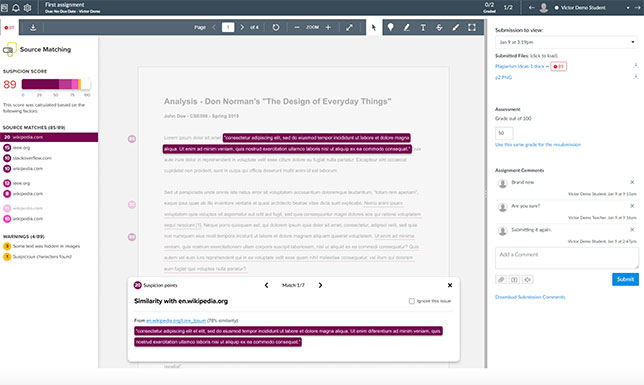Canvas Adds Plagiarism Detection Tools
Canvas and Proctorio are partnering to launch new solutions to help students and teachers avoid plagiarism.
To help instructors validate student work, Canvas and Proctorio are collaborating to introduce two new assessment tools to detect plagiarism.
Proctorio’s Original Verification solution helps students to confirm the authenticity of their work through scanning test-taker work for similarities across the internet. WebSweep scans questions from Canvas assessments and flags them if they can be found online in an effort to prevent instructors from posting exam questions that have already been shared online. Both of these tools are available through the Canvas learning management system.

“Developing new technologies, while protecting academic integrity, allows institutions to securely deliver high-quality learning to more students around the globe. Therefore, we are thrilled to launch Originality Verification and WebSweep, which are a direct result of listening to our partners and their feedback. These two products further expand upon our Learning Integrity Platform to provide our partners with a full suite of services and ensure academic integrity in all learning environments,” said Mallory Dyer, Proctorio’s director of product development.
Both of these solutions were announced this week at InstructureCon, the Canvas’ educational conference. There will be a presentation at the conference on the application of Proctorio to Irvine Valley College classrooms on July 11 from 2:30-3:10 p.m. in room 104C at the conference.
More information about Proctorio’s learning integrity platform can be found here.
About the Author
 Sara Friedman is a reporter/producer for Campus Technology, THE Journal and STEAM Universe covering education policy and a wide range of other public-sector IT topics.
Sara Friedman is a reporter/producer for Campus Technology, THE Journal and STEAM Universe covering education policy and a wide range of other public-sector IT topics.
Friedman is a graduate of Ithaca College, where she studied journalism, politics and international communications.
Friedman can be contacted at [email protected] or follow her on Twitter @SaraEFriedman.
Click here for previous articles by Friedman.